Advancing an Appreciation of Insects
Reiman Gardens' Entomology Department manages the Christina Reiman Butterfly Wing, Entomology Lab, Emergence Chambers, Insect Display Cases, and the Iowa Butterfly Survey Network.
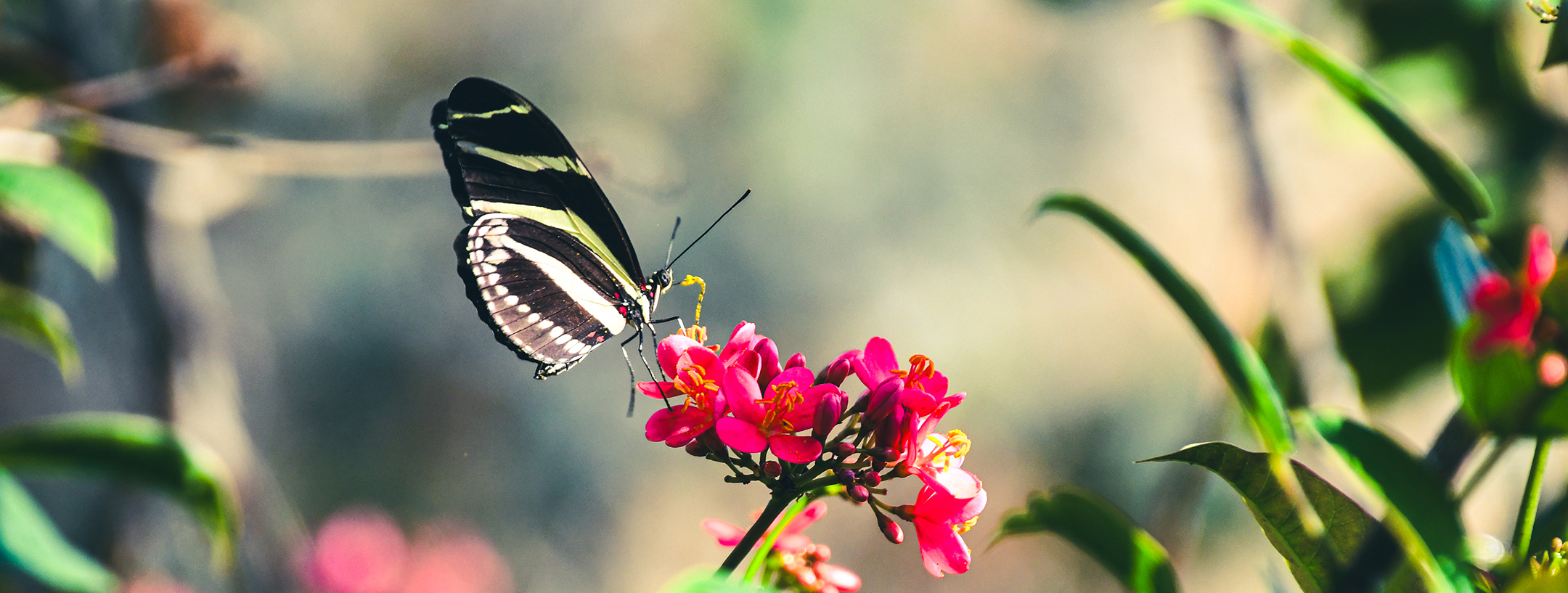
Reiman Gardens' Entomology Department manages the Christina Reiman Butterfly Wing, Entomology Lab, Emergence Chambers, Insect Display Cases, and the Iowa Butterfly Survey Network.
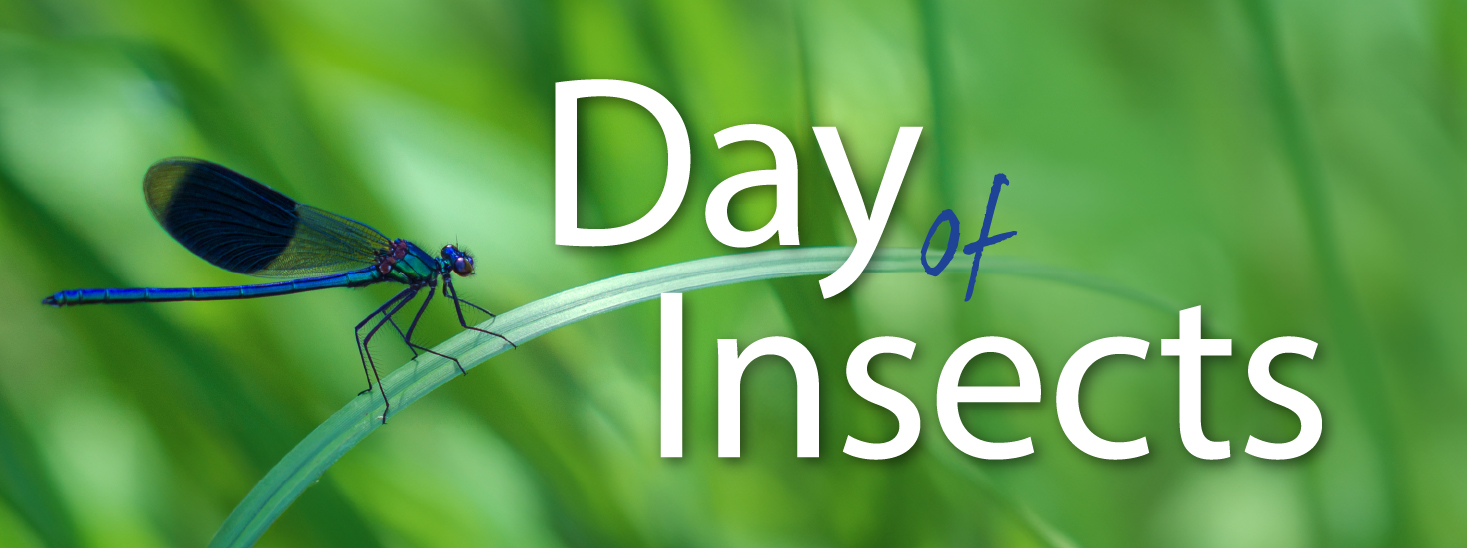

This tropical paradise is home to up to 800 live butterflies representing up to 80 different species. Reiman Gardens is permitted to display almost 1,000 different butterflies of native and exotic species, so there’s always something new to see. While visiting, notice how the structure of the Wing resembles a butterfly.
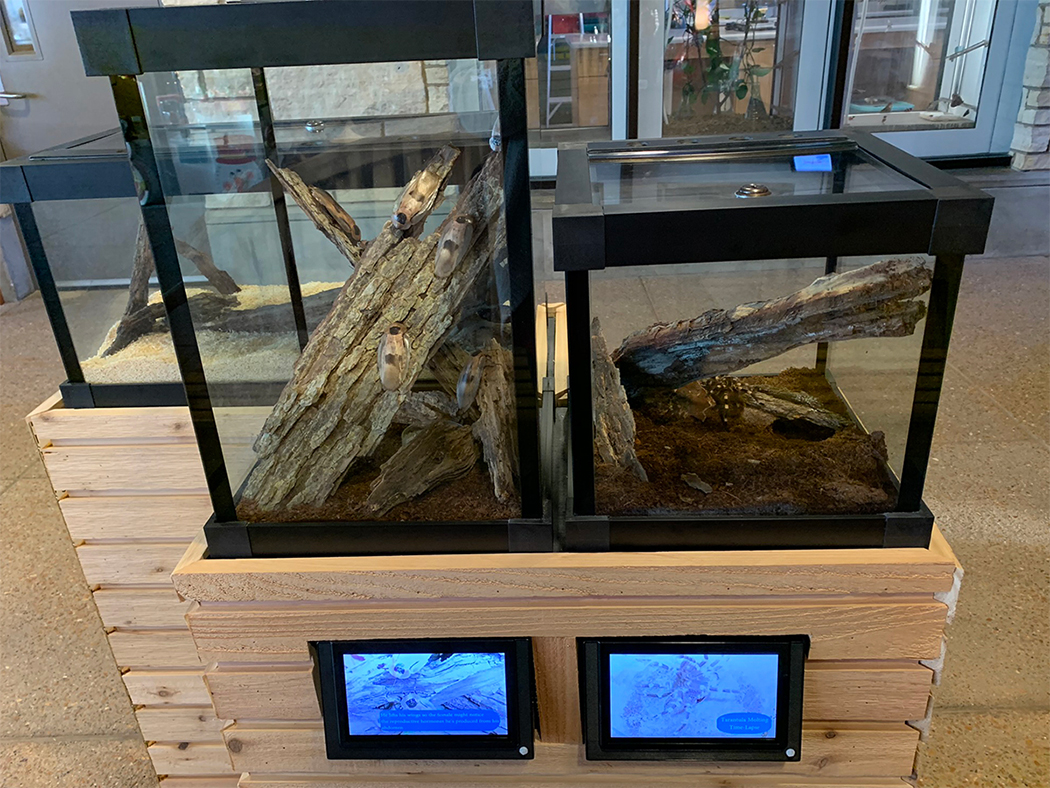
Everyone knows Reiman Gardens loves butterflies, but now we’re bumping up our game in educating the public about other insects as well. Thanks to a grant from Alliant Energy, we have an entomology display, which will rotate a variety of invertebrate species: walking sticks, cockroaches, beetles, tarantulas, scorpions and more. Come see and learn!
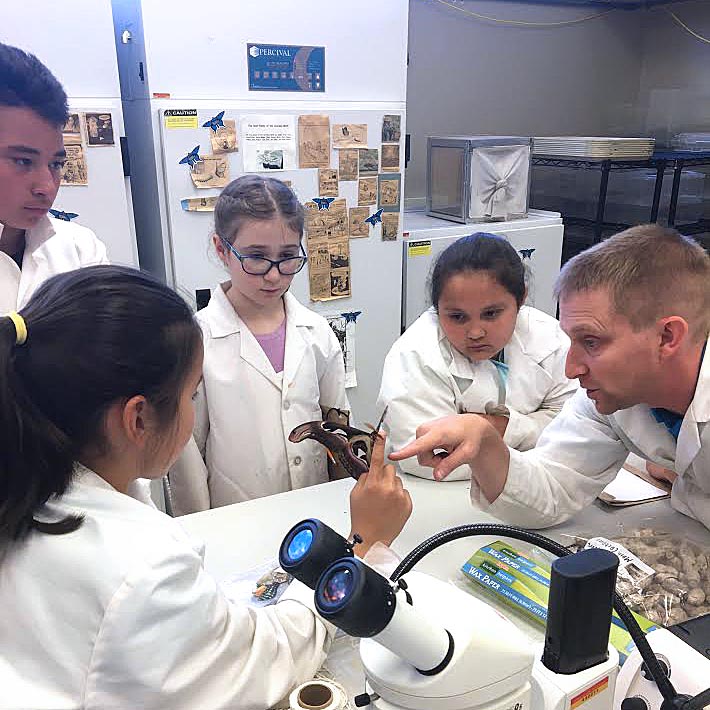
Behind-the-Scenes Lab Tours
Register today to have your own private Entomology Experience in the Lab. Spend time exploring and learning about all things invertebrate with one of our entomologists.
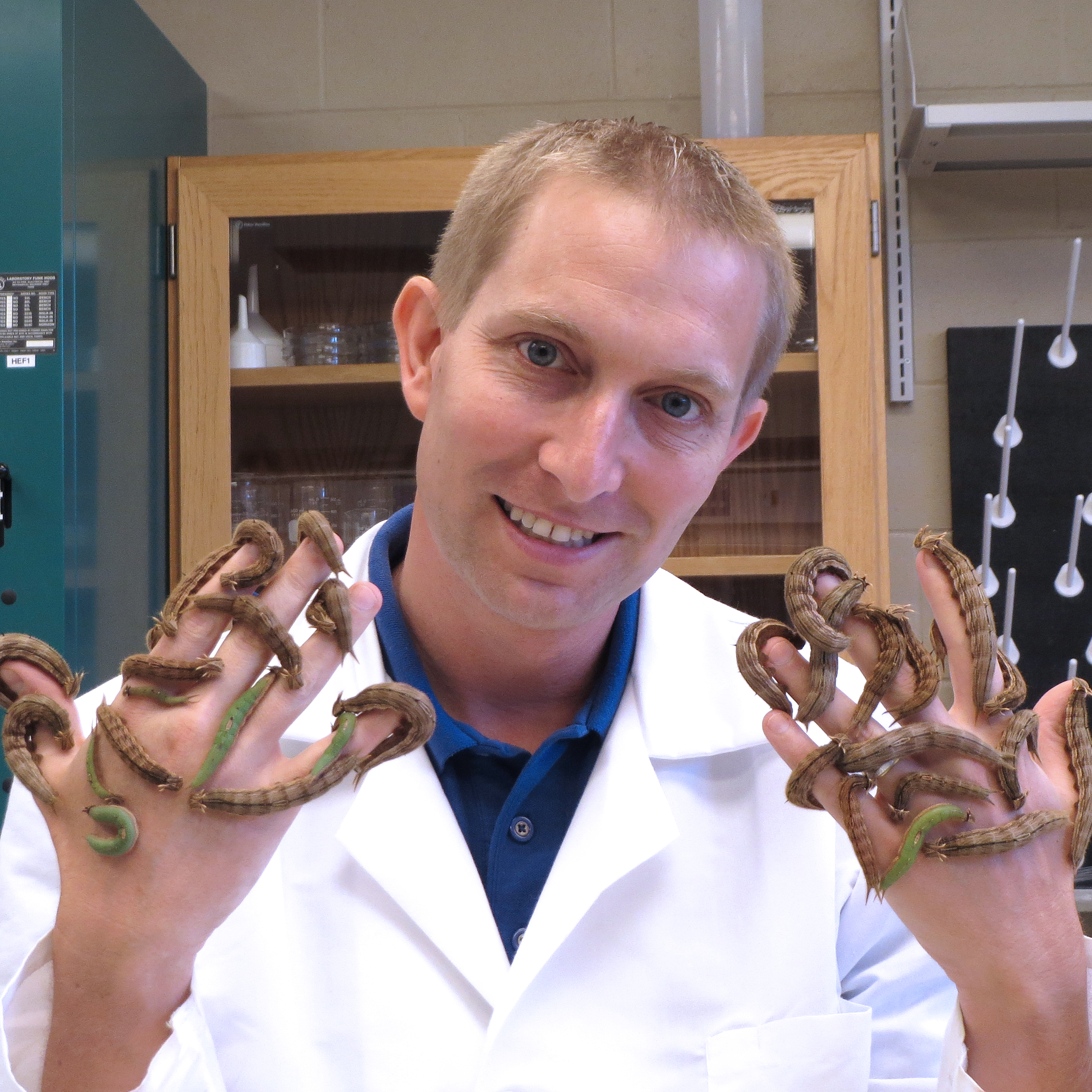
Reiman Gardens' Director of Entomology, Nathan Brockman, brings you the latest updates, forecasts, and important information to help you stay up-to-date on all things invertebrate.
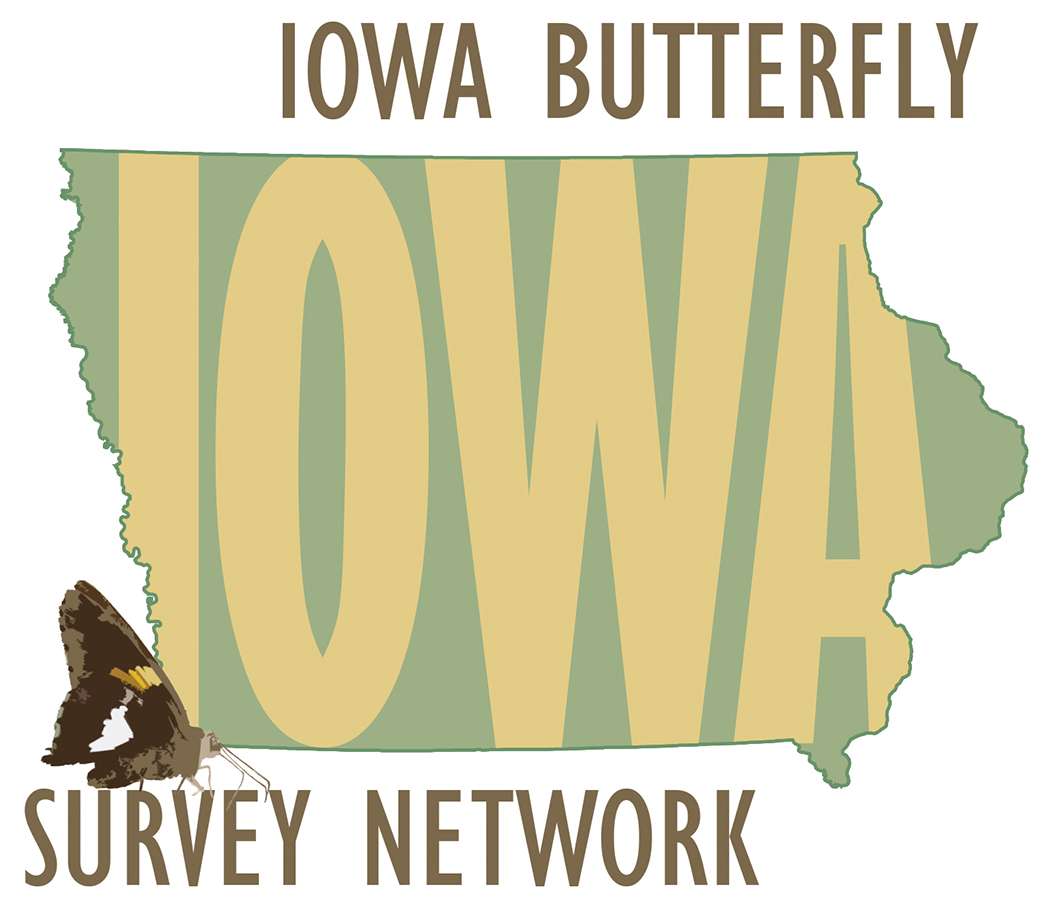
The ultimate goal of the Iowa Butterfly Survey Network (IBSN), managed by Reiman Gardens, is to educate Iowans about butterflies and encourage them to take an active role in conservation.
Of the 122 species of butterflies believed to live in Iowa, more than one fourth are listed as endangered, threatened or of special concern” making their long-term survival is questionable in the state.
The IBSN uses both trained volunteer citizen scientists and conservation professionals to monitor and survey habitat areas for butterfly populations. ISBN data gives a baseline data for researchers on existing populations and their range, identify potential threats, identify beneficial or potentially harmful land management practices, show effectiveness of habitat restoration efforts, and give an annual snapshot of the health of all butterfly populations in Iowa.
Apply to become an IBSN-trained volunteer citizen scientist in your community.
Butterflies and moths both belong to the order of insects called Lepidoptera. It is difficult to draw a distinct dividing line between the two groups. Many people refer to butterflies as being diurnal, active during the day, and moths being nocturnal, active at night. There are many exceptions to this rule among both butterflies and moths. One main difference between moths and butterflies that can be easily observed here at Reiman Gardens, based on the species we receive, is the shape of their antennae. Butterfly antennae are filiform and have a clubbed (or hooked, in the case of the Skippers) ends. The antennae of the moth looks like a feather, with the male’s being more prominent than a female’s. When a person is exploring in natural habitats these differences can be more difficult to distinguish.
Butterfly wings are made of two protein membranes that are covered in thousands of scales and tiny hairs. These wing scales are overlapping pieces of the protein chitin and are modified, plate-like setae. The colors and patterns of butterfly and moth wings come from these layers of tiny scales. There are many purposes for the scales and their coloration.
Butterflies with bright colors and patterns are advertising to predators that they are distasteful. There are also butterflies and moths that are very brightly colored that are mimicking a species that is bad-tasting in hopes of fooling its predators.
The scales form patterns that provide the butterflies with camouflage which helps them hide from predators by easily blending in with the environment. Common forms of butterfly or moth camouflage are wing patterns that resemble leaves or tree bark. Often, the scales on the top of a butterfly’s wings are brightly colored, while the scales on the underside are patterned for camouflage while the butterfly rests.
Butterflies get their colors from pigments and structures. The ordinary color comes from chemical pigments that absorb certain wavelengths of light and reflect others. For example, a butterfly that appears green soaks up the red and blue wavelengths of light and reflects the green, which is what you see when the light bounces back to the eye. Butterflies that are brown or yellow get their different shades from melanin, the same pigment that colors human skin. The metallic-looking color of butterflies stems from the specific structure of the butterflies’ wings and explains why some of a butterfly’s colors seem to shift, change, and appear intense. This quality of changing colors as the observer moves is known as iridescence. It happens when light passes through a transparent, multilayered surface and is reflected more than once. The multiple reflections compound one another and intensify colors.
Butterflies use colors and patterns for attraction and deception. Some butterflies look for certain colors or patterns when searching for a mate. Several species of butterflies and moths have eyespots on their wings. This tricks predators into thinking the butterfly is actually a larger animal, such as an owl.
There are often ultraviolet patterns on the wings that may be seen by other butterflies. These patterns are invisible to us, but are used by the butterflies to find and distinguish mates.
The process of a butterfly emerging from its chrysalis is called eclosion. Eclosion is controlled by hormones. These hormones are released to soften the chrysalis and to trigger the central nervous system begin the movements needed to complete the emergence process. If you look closely at a chrysalis you can see where the eyes and legs are beneath the hard surface. After the chrysalis has been softened and often become transparent the butterfly will push through first with its legs also removing the triangular piece covering its eyes and proboscis. The butterfly then crawls the rest of the way out of the chrysalis, exposing the abdomen and wings. The butterfly hangs upside down from the chrysalis or a nearby surface to complete the emergence process. The wings appear folded or crinkled and the butterfly must begin the process of expanding and drying its wings before flight is possible. Meconium is pumped into the venation structures of the wings by wing movement and the help of gravity. Once the wings have fully expanded, the meconium will be pumped back into the body of the butterfly. The small amounts still in the veins of the wings will dry and harden giving the wings a more sturdy structure that will allow flight. It can take anywhere from 30 minutes to 2 hours for a butterfly’s wings to completely dry, this is usually varied according to size. After the wings have dried but before the butterfly will take its first flight it will dispel the excess meconium from its body.
Being able to tell the difference between male and female butterflies and moths can be easily determined or difficult depending on the species. Some species such as the Painted Lady butterfly look the same in color and markings and can only be differentiated by examining anatomical structures. Males tend to have a more slender abdomen and females tend to have larger rounded abdomens. Some species can be identified by differences in the shape of the forewings. Hairstreaks are a good example of this, males have triangular forewings and females’ forewings have a more rounded shape. Subtle wing pattern differences are apparent in the Monarch. Males have a round black dot in the hindwing that the females do not have. Often females are slightly larger in size than the males. Some species exhibit sexual dimorphism, meaning that the two sexes look completely different.
It is hard to give a quick response on how long a butterfly or moth might live as it varies greatly from species to species. It is also important, when talking about longevity of a butterflies or moths, to consider the times of all four of their live stages and not just the adult stage. The image on the left displays relative time periods for the four developmental stages for six different species. These species were specifically chosen to display the wide range of life history pattern that exist. In the Christina Reiman Butterfly Wing we like to say, on average as adults butterflies they live about two weeks if you were to taking all species into consideration at one time. Again, this will vary greatly if you were to look at a single species and depending on which species you choose to look at.
Picking up the dead is part of our daily routine in the lab. On average, 20-25 butterflies are picked up each morning. They are collected in a sealed container, counted and then placed in the freezer for 72 hours. After that the butterflies are sorted depending on their bodies and wing conditions. If they still have all body parts and wings intact they will be pinned and saved as specimens. If the whole individual is not in good condition but perhaps one of their wings is, the individual wings are saved and used for educational purposes. If the butterflies do not meet either of these categories they will be taken to the incinerator with the rest of the lab waste.
No! But you can support an ongoing campaign by Reiman Gardens and other entomology entities around the state to make the Regal Fritillary (speyria idalia) Iowa's official state butterfly!
After reviewing all species found in the state of Iowa, the Regal Fritillary rose to the top because it is:
In the fall the females lay eggs in the tallgrass prairie near their host plants, which are various types of violets. The violets have already died back for winter and must be found via a chemical compound left by the violets. Eggs hatch in late fall. First instar caterpillars eat the remains of their eggs and nothing else until spring. In early spring caterpillars eat the violet leaves and go through 6 instars, not the normal 5 like other butterflies. The caterpillars molt forming their pupae where they’ll stay for 15 days. Adults emerge in early summer. After mating, females go into summer dormancy until fall and lay their eggs.
Contact your local legislatures and encourage them to support the regal fritillary as Iowa’s official state butterfly. www.legis.iowa.gov/legislators House Joint Resolution 7 (HJR7)
CLICK HERE to view the House Joint Resolution to make the Regal Fritillary Iowa’s Official State Butterfly.